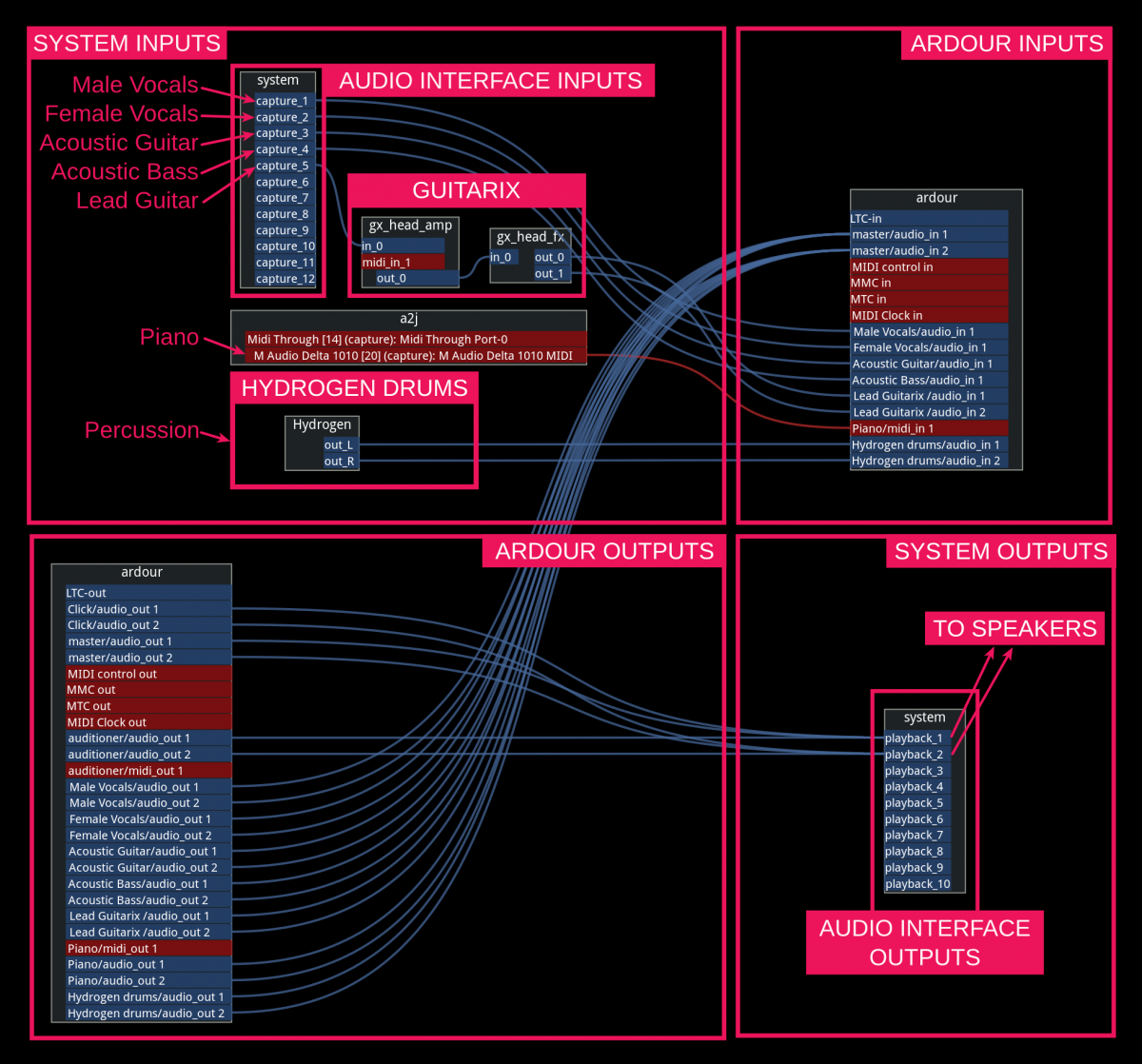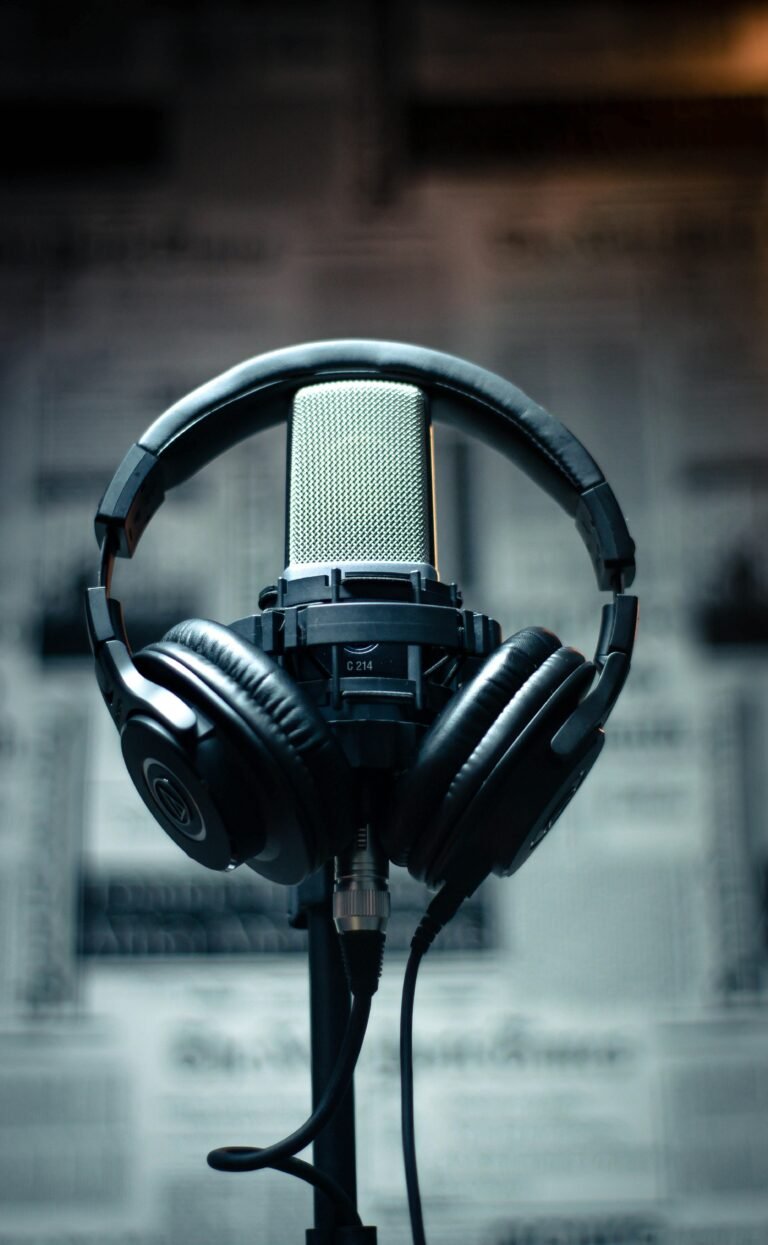
Getting Started with Music Recording and Production on Linux
Essential Hardware Components
Audio Interface
An audio interface is the cornerstone of your Linux recording setup, serving as the bridge between analog and digital audio. For Linux compatibility, prioritize USB Audio Class 2.0 compliant devices that work without proprietary drivers.
Recommended Options:
- Focusrite Scarlett Solo (Gen 3/4): Works out-of-the-box with ALSA, includes phantom power for condenser microphones (~$120)
- MOTU M4: Excellent preamps with low noise, perfect auto-detection with modern Linux distributions (~$270)
- Behringer UMC204HD: Budget-friendly option with MIDI connectivity and solid build quality (~$80)
Key features to look for include phantom power (48V) for condenser microphones, balanced outputs for studio monitors, and MIDI I/O for keyboard controllers.
Microphones
Your microphone choice depends on your recording needs:
For Vocals and Acoustic Instruments:
- Audio-Technica AT2020: Available in USB version for direct computer connection (~$100
- MXL V67G: Large-diaphragm condenser with warm sound characteristics (~$100)
- AKG C1000S: Versatile condenser with battery power option for flexibility (~$150)
For Electric Instruments:
Direct input through your audio interface’s instrument inputs, often requiring software amplification and effects processing.
MIDI Controllers
MIDI keyboards and controllers are universally compatible with Linux through USB Audio Class compliance. Popular options include:
- AKAI Professional MPK series: Full-featured controllers with pads, knobs, and keys
- M-Audio Oxygen series: Affordable keyboards with transport controls and assignable parameters
- Arturia KeyLab Essential: Well-built controllers with extensive DAW integration

Audio routing workflow for Linux music production using JACK, showing system inputs, software and hardware interfaces, Ardour inputs/outputs, and system outputs to speakers
Studio Monitors and Headphones
Studio Monitors:
Connect to your audio interface’s balanced outputs using TRS or XLR cables. Budget-friendly options include KRK Rokit series or Samson MediaOne monitors.
Headphones:
- Audio-Technica ATH-M40x: Neutral frequency response ideal for mixing (~$90)
- Sony MDR-7506: Industry standard for monitoring and mixing
- Beyerdynamic DT 770 Pro: Comfortable for extended sessions with detailed sound
Essential Software Components
Digital Audio Workstations (DAWs)
Linux offers several professional-grade DAWs that rival commercial alternatives:
Ardour: The flagship open-source DAW for Linux, offering professional multitrack recording, mixing, and editing capabilities with full VST and LV2 plugin support.
LMMS (Linux Multimedia Studio): Excellent for electronic music production with an FL Studio-inspired interface, built-in synthesizers, and comprehensive MIDI support.

The LMMS digital audio workstation interface, a free DAW for recording and making music on Linux
Bitwig Studio: Commercial DAW with native Linux support, offering advanced modulation capabilities and innovative workflow features.
Reaper: Cross-platform commercial DAW with excellent Linux support through native builds, known for customization and efficiency.
Qtractor: Lightweight MIDI/Audio sequencer with traditional multi-track approach, ideal for MIDI-heavy compositions.
Audio System Architecture
Understanding Linux audio architecture is crucial for optimal performance:
ALSA (Advanced Linux Sound Architecture): The kernel-level driver system that interfaces with your hardware.
PulseAudio/PipeWire: User-space audio servers that manage application audio routing. PipeWire is the modern replacement, offering lower latency and better JACK compatibility.
JACK (JACK Audio Connection Kit): Professional audio server providing ultra-low latency and flexible audio routing between applications. Essential for serious music production work.
Plugin Ecosystem
Linux supports multiple plugin formats:
LV2: Native Linux plugin format with advanced features and custom UIs.
VST2/VST3: Steinberg’s formats, increasingly supported on Linux.
LADSPA: Older but widely supported format for effects processing.
Recommended Plugin Collections:
- Linux Studio Plugins (LSP): Comprehensive collection of professional-quality plugins
- Zam Audio Plugins: High-quality effects and processors
- Calf Studio Gear: Extensive suite of instruments and effectsyoutube
System Optimization
Real-Time Performance
For professional audio work, consider system optimizations:
Low-Latency Kernel: Ubuntu Studio and similar distributions include optimized kernels for audio work. Standard kernels with CONFIG_PREEMPT=y are often sufficient.
Real-Time Kernel: RT-patched kernels (like XanMod RT) provide deterministic scheduling for ultra-low latency applications. However, standard kernels are adequate for most users.
System Configuration:
- Add user to audio group for hardware access
- Configure CPU frequency scaling to performance mode
- Adjust JACK buffer sizes based on your latency requirements
- Optimize USB subsystem for audio interfaces
Audio Distribution Options
Several Linux distributions are optimized for audio production:
- Ubuntu Studio: Based on Ubuntu with real-time kernel and pre-installed audio software
- AV Linux: Debian-based distribution focused on multimedia production
- KX Studio: Repository providing cutting-edge audio software for various distributions
Budget Considerations
Minimal Setup (~$300-500)
- USB Audio Interface: Focusrite Scarlett Solo (~$120)
- Dynamic Microphone: Shure SM48 (~$50)
- Closed-back Headphones: Audio-Technica ATH-M40x (~$90)
- MIDI Controller: AKAI MPK Mini (~$100)
Professional Setup (~$800-1200)
- Multi-input Interface: MOTU M4 (~$270)
- Condenser Microphone: Audio-Technica AT2020 (~$100)
- Studio Monitors: KRK Rokit 5 G4 pair (~$300)
- Full-size MIDI Controller: Arturia KeyLab Essential 61 (~$200)
- Professional Headphones: Beyerdynamic DT 770 Pro (~$150)
Getting Started Workflow
- Install Audio-Optimized Distribution or configure existing Linux installation with low-latency kernel
- Connect Audio Interface and verify ALSA recognition
- Install DAW and Plugins using distribution repositories or dedicated audio repositories
- Configure JACK for low-latency audio routing (if needed)
- Test Recording Chain with microphone input and monitor output
- Install Virtual Instruments and sample libraries for composition work
Linux music production has matured significantly, offering professional-grade tools that rival proprietary alternatives. With proper hardware selection and system configuration, you can create a powerful music production environment that provides both stability and creative flexibility while maintaining complete control over your audio workflow.
The open-source nature of Linux audio tools means continuous development and no licensing restrictions, making it an excellent platform for both amateur and professional music creators. The learning curve may be steeper initially, but the rewards include a highly customizable, stable, and cost-effective music production environment.










